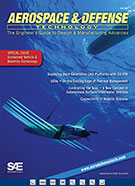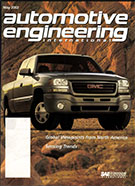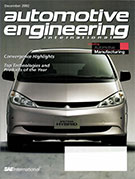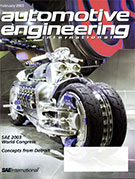Magazine

Aerospace & Defense Technology: May 2015
2015-05-01
Unmanned Aerial Systems Deploying Next-Generation UAS Platforms with 3U VPX Unmanned Ground Vehicles UGVs - On the Cutting Edge of Thermal Management Unmanned Surface/Underwater Vehicles Controlling the Seas - Introducing a New Concept in Autonomous Surface/Underwater Vehicles Robotics Connectivity in Robotic Systems



















